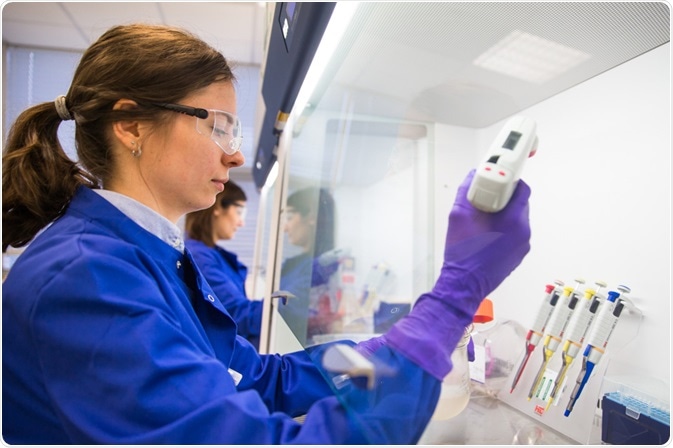Sponsored Content by OXGENEMay 20 2020
The first ever human in vivo genome editing treatment was administered in 2017, and has been likened by some to the first ever moon walk. The individual treated was a 44 year old man named Brian. Brian had a rare genetic disorder known as Hunter syndrome, which leads to the toxic accumulation of particular sugar molecules.
Continuing the space metaphor, Brian’s bravery in undergoing this treatment was like the bravery of astronauts venturing out into the unknown, especially as some previous gene therapy trials have involved side effects and risks.
This treatment is of particular importance, in that it was the first instance of a gene being directly edited in vivo - historically, patients’ cells have been modified outside of the body.
The biotech company (Sangamo Therapeutics) and the doctors that developed this technology were as confident as they could be that the treatment would be safe, bearing in mind there were no other examples or studies where this had been done before.
At this point it was unclear as to what the side effects of this treatment type may be. The treatment was – to coin a phrase - boldly going where no-one has gone before.
This particular study did not seek to reverse the damage caused by Hunter syndrome, but while the outcome may not benefit Brian directly, it will enable doctors to evaluate the mechanism of the gene editing tools which were employed to make the genetic change.
This story was covered widely across both scientific and mainstream news, and resonated with many of the people reading it, as it added a recognizable name and face to the science, affording it a unique, personal angle.
Scientists can become so focused on their day-to-day work that they barely look up from lab benches or pipettes, but many of these individual scientist are playing an essential role in the development of these forms of treatment - whether they know it or not.
Scientists at OXGENE have developed techniques for the purification of viral particles (adeno-associated virus) like those employed to deliver gene editing tools to the patient’s cells. Like many other small advances in the field, this is a crucial element of a larger process.

The history of this treatment did not begin with Brian’s IV infusion, however. It didn't even start with the hospital or the doctors. Like the first moon-walk, it required many years of work, concepts, failed attempts, and the collaboration of hundreds of people working towards a common goal.
While many of these individuals will work on projects that directly improve lives, most of them will never know the patients’ names or see their faces. This is why stories like Brian’s are so important.
Regardless of the outcomes of this treatment and the resulting findings, (preliminary results in Feb 2019 reported a limited success), it has already had a considerable impact on the future of genome editing therapies, including the design and development of new gene-editing technologies and viral vector systems at OXGENE, its customers and its collaborators.
About OXGENE
OXGENE™ combines precision engineering and breakthrough science with advanced robotics and bioinformatics to accelerate the rational design, discovery and manufacture of cell and gene therapies across three core areas: gene therapy, gene editing and antibody therapeutics.
Gene therapy: We’re transforming the vision of truly scalable gene therapies into a reality; progressing our industry leading transient gene therapy systems towards alternative technologies for scalable, stable manufacturing solutions.
Gene editing: We have automated gene editing to deliver CRISPR engineered cell lines at unparalleled speed, scale and quality and generate complex disease models in mammalian cells.
Antibody therapeutics: We’re employing a novel proprietary mammalian display technology to discover antibodies against previously intractable membrane proteins.
OXGENE™ works at the edge of impossible in mammalian cell engineering. Our scientific expertise and technology solutions address industry bottlenecks. For more information, please visit www.oxgene.com
Sponsored Content Policy: News-Medical.net publishes articles and related content that may be derived from sources where we have existing commercial relationships, provided such content adds value to the core editorial ethos of News-Medical.Net which is to educate and inform site visitors interested in medical research, science, medical devices and treatments.